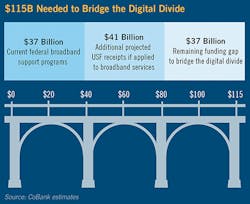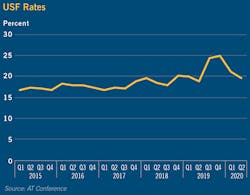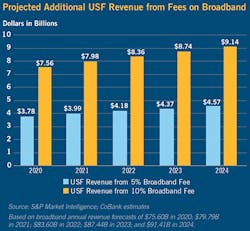Rural Telecom Funding Model Must Change
COVID-19 has wreaked havoc on all Americans but has clearly exposed the vulnerability of the underserved and unserved. For those who lack broadband access, the sense of urgency to bridge The Digital Divide is palpable.
COVID-19 and the associated stay-at-home orders exposed the vulnerability of those without broadband access. While rural operators went to great lengths to connect the underserved and unserved through the crisis, more must be done — especially as leading infectious disease experts say we could be dealing with COVID-19 impacts for a while.
Rural telecommunication operators are taking on business and financial risks to ensure their communities remain connected during the COVID-19 pandemic. Many are providing free service and setting up free Wi-Fi hot spots, exposing them to cash flow risks.
InvisiLight® Solution for Deploying Fiber
April 2, 2022Go to Market Faster. Speed up Network Deployment
April 2, 2022Episode 10: Fiber Optic Closure Specs Explained…
April 1, 2022Food for Thought from Our 2022 ICT Visionaries
April 1, 2022Universal Service Fund (USF) contribution reform may have a material impact in preparing rural America for any similar occurrence. Given current circumstances, this may be an opportune time to implement long-term structural changes that will help ensure operators in rural America have the support required to bridge The Digital Divide for the long-term.
At the federal level, a number of government programs help build and maintain rural broadband networks. These programs total approximately $37 billion that will be distributed over the next 10 years. The FCC has estimated it would cost $80 billion to bridge The Digital Divide. Land O’ Lakes CEO Beth Ford, who is championing efforts to bridge The Digital Divide, believes the number is closer to $150 billion.
The FCC’s estimate is arguably too low given its flawed methodology for estimating the number of unserved and underserved Americans. For example, in May 2019, the FCC said that 93.7% of Americans had broadband access, leaving only 21.3 million Americans without it. But when researchers at Broadband Now manually checked broadband availability, they found that almost twice that number of Americans lacked broadband access. In reality, the actual number is probably somewhere in between.
Also, the FCC’s $80 billion estimate likely includes a mix of fiber and fixed wireless as they have taken a technology-agnostic approach to bridging The Digital Divide.
The Land O’Lakes estimate might be on the high end of what it would cost as it appears to suggest an all-fiber, or a fiber-heavy, approach. Fiber is more costly to deploy in sparsely populated areas versus fixed wireless. So, if we take the midpoint of the range, it would peg the cost at $115 billion.
With just $37 billion coming from current federal programs, the real funding gap is $78 billion (See Figure 1.)
Figure 1.
Contribution Reform Option
One of the ways to bridge this funding gap is via contribution reform. Today the $37 billion in federal programs is partially funded by the USF. The USF gets its money from fees applied to telecom services, which is problematic. Given the decrease in landline subscriptions, the pool of money the USF fees are charged against is shrinking. To compensate, USF fee rates have been increasing. (See Figure 2.) Over time, this appears to be an unsustainable model.
Figure 2.
One solution is to apply USF fees against broadband bills as well as voice service. For example, a 5% USF charge applied to broadband bills would increase USF receipts by over 44%. A 10% USF charge on broadband would almost double USF receipts, bringing in an additional $41 billion over the next 5 years (See Figure 3.) This additional revenue from broadband fees would cover over one-third of the $115 billion needed to bring high-speed broadband to most of rural America and to bridge The Digital Divide.
Figure 3.
Rural operators are supporting their fellow rural Americans in innovative ways during the COVID-19 pandemic. But the sacrifices being made by these companies come at a cost and have a finite lifetime. COVID-19 has demonstrated that reliable broadband is critical and exposed the vulnerability of those living in rural America without broadband access.
Like this Article?
Subscribe to ISE magazine and start receiving your FREE monthly copy today!
Setting up hot spots for school children to use while in the parking lot of a fairground is admirable, but this is not a sustainable model for rural operators or the community. Neither is the USF funding mechanism that only levies fees against telecom bills. Contribution reform that includes applying fees to broadband bills could stabilize the USF program and ensure that more money is available to help bridge The Digital Divide.







